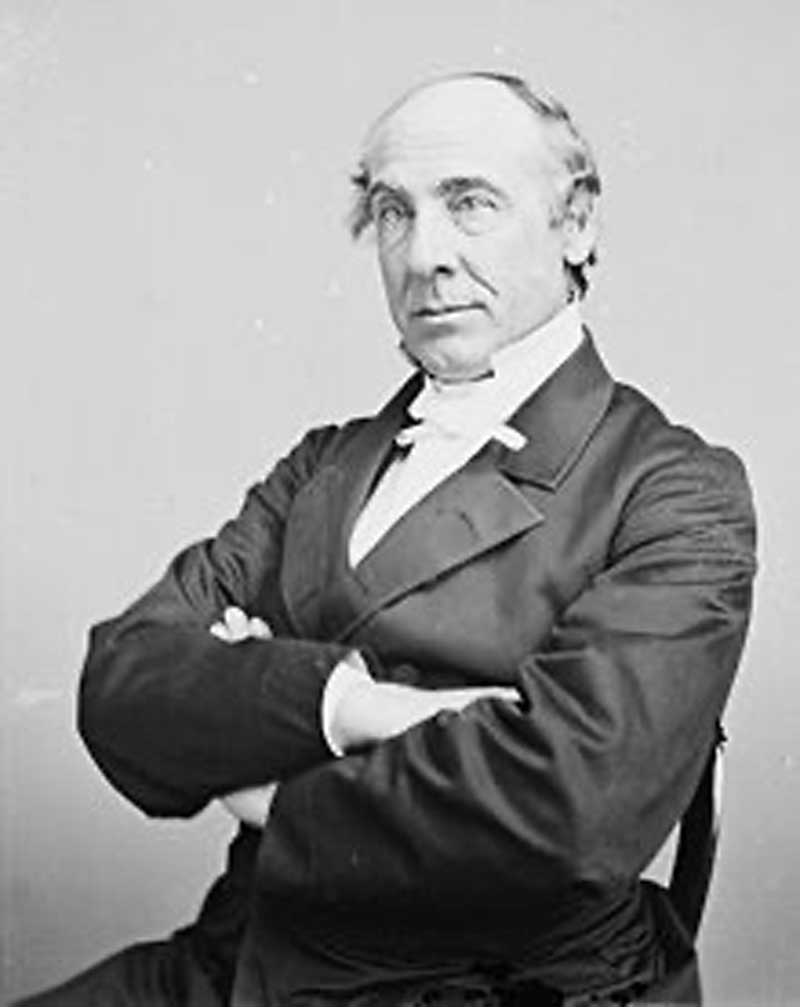Will Truth Crushed to the Ground Rise Again?
Part 7 of 7 of a Series on Reconstruction 1865-1877

The study of the causes and conduct of the “Civil War” and the Reconstruction era that followed from 1865 to 1877 is still governed by the partisan myths of the Union victors and modern political correctness. But “Truth crushed to the earth” (William Cullen Bryant) is still the truth and “shall rise again.”
In his second inauguration speech, President Lincoln had presented a generous vision for bringing the South back into the Union fold. His often quoted words, “with malice toward none; with charity for all…to bind up the nation’s wounds,” were to set a new attitude and theme in the restoration of the South to the Union. Lincoln had instructed Grant in accepting Lee’s surrender at Appomattox to “let him up easy.” Union General J. L. Chamberlain ordered his battle seasoned troops at Appomattox to give a salute of honor to Confederate troops as they passed in final review at that surrender. Robert E. Lee had advised his men to go home and be good American citizens.
Following the assassination of Lincoln, however, goaded by the press and Radical Republicans in Congress, the flames of regional mistrust, hatred, and a desire for vengeance on the South erupted with vehement passion. Lincoln’s Vice President, now President Andrew Johnson, a relatively conservative Union military governor of Tennessee and former Democratic Congressman from East Tennessee, had planned to follow the Lincoln plan for restoring the South to the Union. In this he would be vigorously opposed by the Radical Republicans led by Thaddeus Stevens of Pennsylvania in the House, Charles Sumner of Massachusetts in the Senate, and Edwin Stanton, Secretary of War. Their objective was permanent Republican Party dominance of the nation. A humiliating and vengeful subjugation of Southern States was to be an important instrument of the Radical Republican plan for continued national dominance. Southern States would be remade into Republican States fashioned and tightly controlled by Radical Republicans. Although civil rights idealism played a part in Radical Republican thinking and a very great part in their talk, the main role of former slaves would be insuring Republican political dominance in the South and suppressing any rising political opposition. This would have the effect of opening the South to economic exploitation and dominance by enterprising Northern fortune and office seekers for twelve years.
There are two warring schools on Reconstruction today. Up until about 1960 the Dunning school prevailed. Dunning and his students viewed Reconstruction as the most corrupt, tyrannical, and disgraceful period in American history. After looking at the facts presented, most conservatives and moderates are appalled at the scandalous injustices inflicted on both white and black at the hands of Federal Military Government and its Freedman’s Bureau and Union League agencies and swarms of corrupt opportunists.
However, it is now the Foner school that dominates. Eric Foner is a Neo-Marxist, Columbia University professor, who believes Reconstruction did not go far enough. Harsher methods should have been used to remake the South into a more liberal society. Many of the facts Foner presents are correct, but other important facts and context are missing. His analysis generally favors big government despotism with a liberal flavor. Yet many media conservatives have only read leftist revisionist Foner’s book, Reconstruction: America’s Unfinished Revolution, 1883-1877, published in 1988 and 2005.
One difficulty in writing about Reconstruction is the role of the Klan. The Dunning school was willing to look at the Klan in the context of Radical Republican and Union League violence against and suppression of white Southerners after the war, while the modern Foner school is unforgiving. It is also extremely important to realize that the KKK of 1865 to 1877 was originally a regulator organization completely different in principles and motives from the imitation KKK that was founded in 1915. The original early KKK was primarily organized to protect both white and black Southerners from the Radical Republican sponsored violence of the Union League.
In my book, The Un-Civil War: Shattering the Historical Myths, pages 352-3, I have recommended 16 books and several tape series and other articles covering or partially covering Reconstruction Here in my opinion are the best seven for most readers. :
Charles Adams; When in the Course of Human Events: Arguing the Case for Southern Secession, 2000
John Chodes; The Union League: Washington’s Klan, 1999. Essential reading.
E. Merton Coulter; The South During Reconstruction 1865-1877, 1947. In my opinion the best book on Reconstruction.
Thomas J. DiLorenzo; The Real Lincoln: A New Look at Abraham Lincoln, His Agenda, and an Unnecessary War, 2002.
William A. Dunning; Reconstruction, Political and Economic 1865-1877, 1907.
Ludwell H. Johnson; North Against South: The American Iliad 1848-1877, 1978, 1993, 2002 printing.
Alfred B. Williams; Hampton & His Redshirts: South Carolina’s Deliverance in 1876, 1935.
Unfortunately, once the Northern carpetbaggers and Radical Republicans had abandoned their black political constituency in 1877, Southern Democrats indiscriminately made second class citizens of all blacks, friend and foe, regardless of qualifications. The Southern experience with the widespread corruption, demagoguery, and oppression of Reconstruction caused in most whites a fear and revulsion of black participation in government that would take many decades to subside. It took Alabama and South Carolina nearly one hundred years to pay off the wild and corrupt state spending of the Reconstruction era. Blacks were placed under the same type “black laws” that still relegated blacks to second class citizenship in most Northern states. Several Northern states, such as Indiana, Illinois, and Oregon had laws that prevented blacks or mulattos from even entering their states. Because of the Reconstruction experience and the larger black population in the South, the residual of these “Jim Crowe” laws lasted longer in Southern states.
The Union League and Freedman’s Bureau had failed in their purpose, but succeeded in doing tremendous damage to race relations in the South. Thus they were a strong contributory cause in retarding rather than advancing black political and economic progress.
Union League militias in the South are estimated to have numbered nearly 280,000, far outnumbering regular Union Army troops. Except for mostly white Northern leadership, the Union League rank and file were former slaves and 100,000 blacks who had served in the Union Army. Numerous Union Army communications indicate that many of these were recruited into the Union Army at the point of bayonet. Yet at the war’s end they were not welcome in the North and even excluded by law from entering many Northern states. They had to return to the South where they were strongly resented by the white Confederate veterans, who they had fought against during the war. Most Union League militiamen, both Union veterans and ex-slaves, wore the Union Army uniform. They were essentially federal agency units of the War Department assigned to the military or carpetbagger governments for their political bidding and defense. Often the more resentful or vengeful Union League militiamen used their new and elevated status to insult and menace the now humiliated Confederate veterans and their families. The Union League militias were also notorious for their lack of discipline. In addition to their assigned political violence and bullying, there was often wanton violence, destruction, confiscation, and thievery. They outnumbered regular Federal troops in most states. Despite their numbers, reputation for brutality, and connections to Federal power, the Union League was first intimidated and then defeated by the Invisible Empire of the Ku Klux Klan. The severely damaged racial relations that were the work of the Union League and Reconstruction policies still lingers, but modern political correctness generally assigns the South as the sole scapegoat.
However, an enormous portion of the violence blamed on the KKK during Reconstruction was actually the work of the Union League. The League had found a way to disguise its violence and blame it on the KKK. The first two convictions under a Mississippi anti-Klan law in 1870 turned out to be two black Union League men who had been harassing a black Democrat. A U.S. Marshall in North Carolina also commented on the high number of Union League incidents using imitations of KKK disguise. In collusion with Radical Republican Congressmen in Washington, Radical Republican state governments in the South made a concentrated effort to report as many incidents of white violence against blacks and white Republicans as possible. They went much further than honest reporting to keep Congress and Republican voters in the North stirred up against reputed Southern misdeeds. Much distortion and fabrication was involved and was readily passed on as fact by a biased and obedient Northern press. For example, in April 1866 in Memphis, there were more than forty blacks killed in a three day “race riot.” This turned out to be a conflict between a garrison of black federal soldiers and Irish police of recent Northern importation.
The bottom line is that Reconstruction further devastated the South and retarded its economic recovery by many decades. The primary economic beneficiary was the Northeast. The primary political effect of the War and Reconstruction was that we evolved from a philosophy of limited government to big, powerful, highly centralized unlimited government. The degree of corruption and despotism during Reconstruction may seem incredible, but they were the natural result of a collusion of big government and politically connected businesses unchecked by the consent of the governed.
Dr. Henry Bellows, a Unitarian minister and the founder of both the U.S. Sanitary Commission and the Union League, wrote a summary of Union League consequences in 1879. He was appalled that an organization of such good original intentions [exalting the power of consolidated Federal government over the Constitution] had such staggeringly negative consequences even in the North. The philosophies of vengeance, violence, and corruption that had been inflicted on the South came home to roost in the North.
“There was something more hopeless and desperate in the political, social, and commercial demoralization that followed the war than the war itself…. The old and pestilent doctrine of the spoils of war had changed from an acknowledged heresy into a dogma….Nothing less than a moral typhoid , the consequence of a general malaria in the public air, can account for the sinking tone of public sentiment during the decade following the close of the war;… partly a reaction to the exalted patriotism that had sustained the war into victory, partly the dreadful result of the unsettling influence on values, standards, habits, by the creation of an artificial currency that did not carry its measure in itself, partly by the coming to the top of powerful men who had suddenly become rich without the aid of any moral habit or any refined or gentlemanly standards.”
“This decline in the public tone was not confined to the vulgar and ignorant. It affected all ranks and professions, perhaps most marked where it would naturally be least looked for, and most abhorrent, in the clerical calling. No doubt it affected injuriously many of the leaders of all parties and every school of politics, the Senate, the Bench, and the Bar.”
Roberta F. Cason, writing in The Georgia Historical Quarterly, volume 20, in 1936 summarized with this:
“The Union League of Georgia did more to breed suspicion between the races, to create misunderstanding, to ignite often justifiably but none the less dangerous explosions of feeling and conduct, to estrange the black man from the people with whom he must live, to fan alive and kindle in new places fires of prejudice, than any other single influence. There can be no doubt that if the races had not been set against each other, these situations pregnant with fearful implications for the future, would never have come about…The Union League distorted the black’s reaction to freedom, enslaved him politically for a time, and was a vital factor in creating the situations that have resulted in his economic slavery.”









 Mike Scruggs is the author of two books: The Un-Civil War: Shattering the Historical Myths; and Lessons from the Vietnam War: Truths the Media Never Told You, and over 600 articles on military history, national security, intelligent design, genealogical genetics, immigration, current political affairs, Islam, and the Middle East.
Mike Scruggs is the author of two books: The Un-Civil War: Shattering the Historical Myths; and Lessons from the Vietnam War: Truths the Media Never Told You, and over 600 articles on military history, national security, intelligent design, genealogical genetics, immigration, current political affairs, Islam, and the Middle East. 


